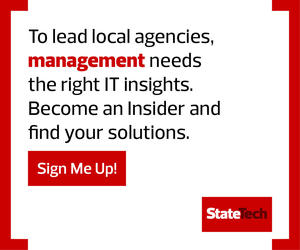Helpful Tools for Containing IT Costs
IT leaders need to get a clear handle on their incoming expenses and quickly identify billing redundancies or errors — and get appropriate refunds. One clear area where this can be accomplished is in telecom expenses.
Telecom Expense Management is software that can review invoices, contracts and services, with minimal effort required from IT staff. Working with a trusted partner such as CDW, agencies can compare existing line items against current contracts, inventory and telecom needs; identify errors and duplicate charges; uncover savings and get credits other auditors miss; implement and manage approved rate and service adjustments to completion; and get detailed and accurate final telecom expense reports.
IT asset management solutions are another way IT leaders can get a clear view of their IT expenditures. Using ITAM, leaders can identify potential risks, look at how they are deploying applications and IT environments, build a proof of concept in a working environment, and find ways to reduce overall spending. ITAM allows IT leaders to be methodical about how they are spending budget dollars so that they can be as efficient as possible.
Yet another tool is an infrastructure assessment, which can look at both cloud and on-premises infrastructure and help IT leaders identify cost-saving redundancies, support issues, oversized environments and other potential issues. Such health checks can help leaders identify cloud instances that can be run on demand as well as duplicate workloads and can help them solve problems before they arise. All of that helps contain costs.
MORE FROM STATETECH: How much will governments automate?
Consolidation and Virtualization Help Control Costs
Other avenues for IT leaders to contain costs involve how they construct and manage their infrastructure. One path forward is to embrace hyperconverged infrastructure, which bundles computing, storage and networking all into one appliance.
HCI offers simplified management through a single software interface, which saves time and money. Consolidating physical infrastructure also allows agencies to avoid paying costs to upgrade individual servers and pay for maintenance to old networking infrastructure.
Another option is to virtualize networking and data centers. This also helps contain costs, as relying on software-delivered services instead of physical hardware saves money and time and reduces onsite energy consumption.
“The No. 1 benefit with software-defined is decreased complexity and cost,” Marc Moffett, Cisco’s senior systems engineering director for the U.S. public sector, tells StateTech.
Software-defined infrastructure, which decouples control and data planes, enables state governments to more easily deploy and manage infrastructure for remote branches. Virtualization also opens up opportunities to automate the management of infrastructure, saving time for IT staff.
It’s clear the pandemic has created unprecedented challenges for IT leaders in terms of budgeting. However, they have tools at their disposal to contain costs responsibly and help their agencies move forward.
This article is part of StateTech’s CITizen blog series. Please join the discussion on Twitter by using the #StateLocalIT hashtag.












